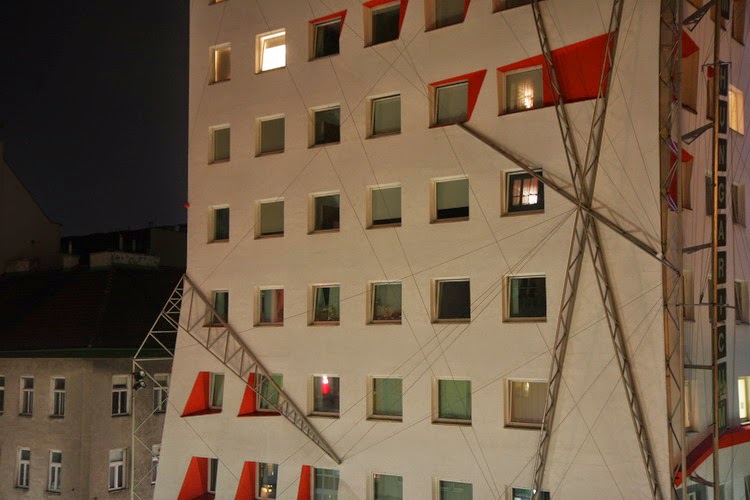It is nothing else but a zoom lens, but used the other way round like in a slide projector.
The projector had three transmissive LCD elements, one for each color (red, green, and blue). The three images are combined by a four-way beam splitter that looks like a glass cube. The focal plane for which the lens is optimized is therefore quite a bit away from the last lens element, which is very important if you want to attach such a lens on your DSLR.
From a quick research on the Net, i found that normal slide-projector lenses can for that reason usually not be attached to DSLRs.
Why?
The reason why I really wanted to do the attachment became clear, when I first looked at the lens. I was very surprised that when looking at the lens from the "camera-side" the pupil where light comes our was huge (about 40 mm diameter) - a property usually only observed with very fast lenses.Being an available-light-enthusiast and flash-avoider, I just had to try what it was worth!
To determine the focal plane of the lens I made a simple experiment where I placed piece of flat white plastic behind the camera. Sitting inside a preferrably dark room having the lens pointed out of the window will give you a nice upside-down image of the world on a bright day. I set the focus ring on the lens to what I figured was infinity and measured the distance between the flange mount of the lens and the image plane. It was 54 mm.
Knowing that my Canon EOS camera has the sensor set 44mm into the camera measured from the surface of the bayonett mount, it became clear that I needed to build an adapter that holds a distance of approximately 10 mm between the camer's bayonett surface and the flange mount of the lens.
Spending some time the shop, I modified an old EOS-to-M42 adapter and attached a piece of plastic to it which has threaded holes that are compatible with the flange of the lens. I made the adapter a little thinner and used some neoprene foam as extra spacer. when tightening the four screws, the foam is compressed which allows to fine-tune the distance between sensor and lens. I adjusted the distance, so that far away objects render nicely on the sensor when the focus ring of the lens is set to infinity.
Note that the lens sticks out of the flange mount quite a bit. I have checked that this is not an issue with my EOS-40D which is an APS-C type camera. The cameras with these smaller sensors also have a smaller mirror that requires less space when swinging out of the way. If you make lens mounts like this you HAVE to ckeck if there is enough mirror clearence before you attach the lens. If the mirror hits the back of the lens your camera might become a very expensive piece of scrap. If you have a full-frame camera, the clearence is even less because the mirror is bigger - so take extra care with your full-frame!
What is it worth?
The f-number of the lens is most simply measured by comparison with a known lens. I took my Canon EF-S 17-55mm f/2.8 as a reference and adjusted the zoom so that it covers the same image area as the new arrangement. The match was at 28 mm. Then I took a sample shot with the reference lens and attached the new arrangement. I played with the shutter time until the two images had the same exposure. The histogram function in the camera is a simple way to check.Evaluation of the formulas found on Wikipedia revealed that the lens has an f-value of approximately f/1.8. This is very satisfying for how much it cost me!
Projector lens, 28mm, 0.8s, f/1.8
Canon EF-S 17-55mm @ 28mm, 2s, f/2.8
Image quality?
From the test-shot I found the image quality quite convincing. I was especially surprised at the sharpness in the corners. Note that the lens has no diaphragm, and is used "wide open". If one would stop it down - for example by a holding a black sheet with smaller opening in front of the lens, the resolution should increase, but on a 10 Megapixel camera I wouldn't worry much. See the 1:1 crops below and make up your own mind.
Center crop
Crop of lower right corner










